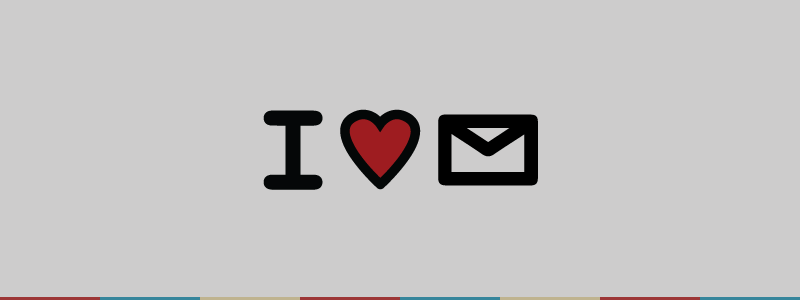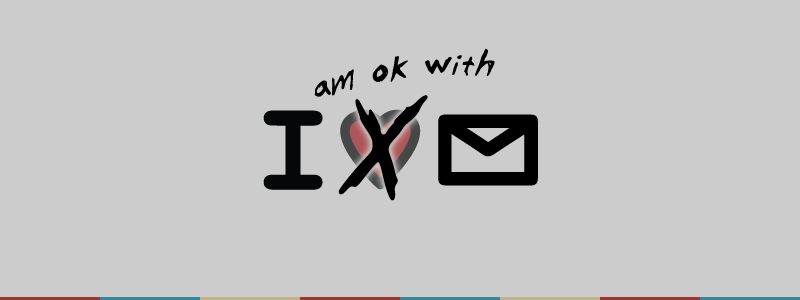
Why You Should Care About Email Design
How do we get more designers and developers to pay attention to email?
This is what I think about most when it comes to email design. You might rather jump in a volcano than wrestle with archaic markup and inline CSS. Let someone else deal with email, amirite?
If I was in a room with Hitler and an HTML email and I had a gun with two bullets, I’d shoot the email twice.
— OJ (@tallglassofoj) April 13, 2015Ok maybe this is a bit extreme, but email design doesn’t get much love.
It doesn't have to be like this.
This is an open letter to designers and developers who’d rather not work on email.
How I Started
I’m not an email specialist. I started my career in 2001 as a web designer. Sure, I sent out the occasional text-only email blast, but my work focused on websites. Throughout my career, I've worked on small teams where folks wear multiple hats... and wouldn’t you know it, email has always been something that needed to be done. I started with “I’ll take a crack at email,” progressed to, “I have experience with email,” and eventually got to, “I’m pretty good at email.” Since 2007, email has been a part of every job I’ve had.
But here's the thing: the majority of my work is STILL on sites and apps. I'm not an email specialist. I just care.
I never stopped working on websites and apps, I just added email to my skill set and kept going.
You can do the same.
Email Is Important
(And You Already Know Why)
I won't bore you with email statistics, but email is a major touch point for just about any business. Selling something? Onboarding a customer? Resetting a password? You get the point. Email is the most effective form of communication on the Internet, a direct message from you to a single person. The moment your email lands in someone's inbox, you’ve got their undivided attention.
On top of that, email is something that nearly everyone uses and understands. There is no learning curve. There is no rate of adoption. Email is everywhere. Social sites and chat apps come and go, but people will be checking their email 10 years after they’re dead.
Simply put: email can't be ignored. Email design is a crucial skill to have.
Email and Web: One in the Same
Some people consider email design its own discipline, but I don't buy it. Grid systems, typography, responsive design, web performance, copywriting, progressive enhancement, A/B testing are all part of both my email and web projects.
If you’re already comfortable with your web workflow, use the same tools to build emails!
- Want a templating system? Use a static site generator.
- Want to keep CSS and HTML separate? Use an inliner.
- Want to use Sass or Less? Then do it.
- Want to automate annoying parts? Use a task runner.
- Want to test client rendering quickly? Use Litmus.
My toolset for web and email is pretty much the same: Balsamiq Wireframes, Photoshop, Sublime Text, and a browser.
Emails can have things like CSS animations, SVG infographics, web fonts, and video backgrounds for clients that support them (and fallbacks for those that don’t). It’s true that processed email code still is an ugly soup of tables and inline CSS, but besides that, is it really so different from the web? It's still HTML, CSS, and images.
You already know this stuff.
Email even has its own favorite scapegoat: Outlook is the Internet Explorer of email design.
If your goal is to create a positive holistic online experience for people, chances are you're going to have to touch email at some point. If you already know how to build web pages, you’re a great candidate for email. You can have a foot in both worlds. Experience Designers are common on the web; imagine the possibilities for email.
And remember: you don't have to be an email expert to have a positive impact.
All you have to do is care.

For those interested, here’s a few links to get started...
Learn Email Basics
- Both Campaign Monitor and Mailchimp have excellent field guides that go through the basics and answer common questions like “Why do HTML emails need all those
<table>’s?” - Campaign Monitor has an excellent guide to CSS support in email clients. It’s like CanIUse.com for email.
Tinker with Code
- There are free email templates on GitHub (like mine) to study and experiment with.
Spread the Word
- Help build Really Good Emails (no email code required).
- Talk about email at your job, on Twitter (we’re a friendly bunch), at a meetup, etc.
Big thanks to Jason, Sara, Neil, and Will for their help with this article.
